Art & Exhibitions
‘We Wanted to Unmoor Her From the 1950s’: A Joan Mitchell Retrospective at SFMOMA Shows the Artist as You’ve Never Seen Her Before
The show includes everything from student work to the final paintings she made before her death.

The show includes everything from student work to the final paintings she made before her death.

Sarah Cascone

For the first time in nearly 20 years, the late Abstract Expressionist painter Joan Mitchell is the subject of a major U.S. museum show, bringing together more than 80 canvases at the San Francisco Museum of Modern Art.
The show, organized with the support of the Joan Mitchell Foundation, opens with a pair of Mitchell’s student works, painted in a Cubist style right after her graduation from the Art Institute of Chicago while she was visiting Paris, where she would move permanently in 1959.
One of those canvases, Figure and the City (1949–50), “was a touchstone for us,” Sarah Roberts, SFMOMA’s head of painting and sculpture, told Artnet News during a tour of the show. “Mitchell said that when she painted it, she knew it was going to be the last figurative painting she ever made. And it was very much about the psychology and the mood of the figure, and the landscape around her.”
Not long after came Mitchell’s breakthrough period, and the works that established her as a key member of the New York School of painters.
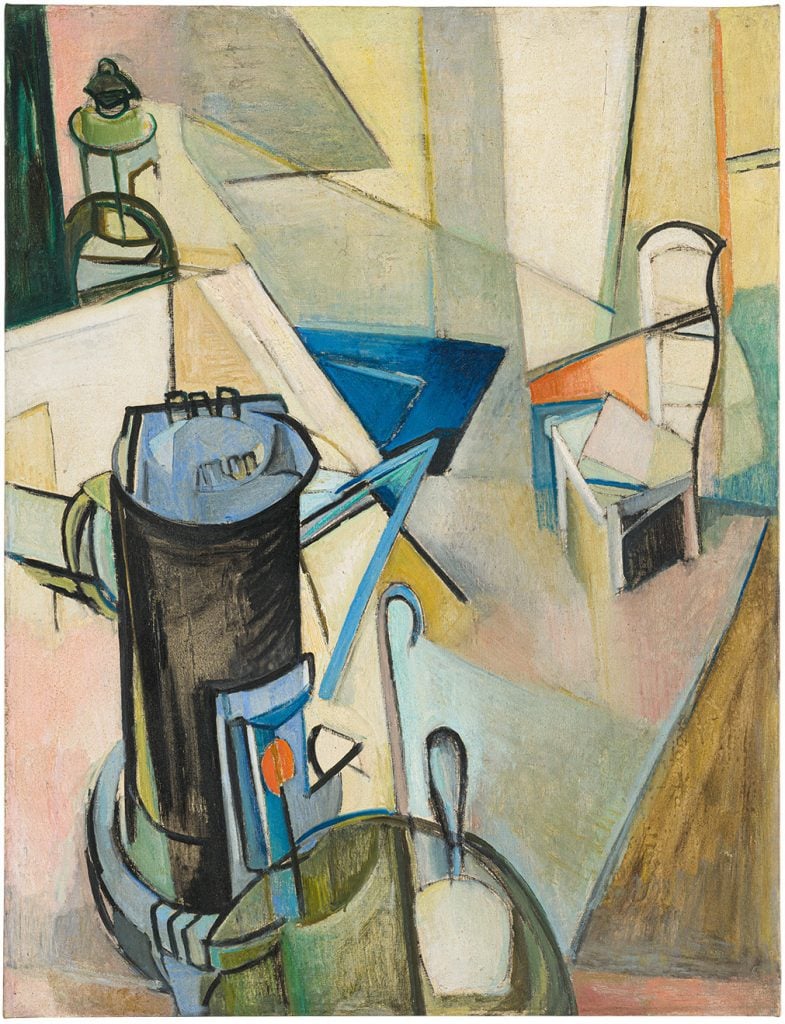
Joan Mitchell, Untitled (1948). Photo by Kris Graves, collection of Joan Mitchell Foundation, ©estate of Joan Mitchell.
“There’s transition for every artist from being a student or a young person to being a full-fledged artist,” Katy Siegel, senior programming and research curator at the Baltimore Museum of Art, told Artnet News. “Where Mitchell finds herself is incredibly thrilling, so the declarativeness and definitiveness of a work like To the Harbormaster [1957], which is so ambitious in scale, is really important.”
From the start of Mitchell’s career, her self-assurance as an artist was clear, and she seemed to be comfortable expressing her power in a variety of ways.
“She was an athletic genius. She was not only a diver and and horseback rider, Mitchell was an actual champion figure skater,” Siegel said. “Her confidence in her physicality, her ability to move big paintings by herself, to really navigate a very large canvas, that is really unusual.”

Joan Mitchell, To the Harbormaster (1957). Photo by Tony Prikryl; AKSArt LP; ©estate of Joan Mitchell.
Roberts and Siegel co-curated the exhibition, which was originally slated to debut at the Baltimore Museum in 2020. (It will now be the show’s second venue.) Plans for “Joan Mitchell” to travel to the Guggenheim in New York had to be scrapped when lockdowns scrambled exhibition calendars. Instead, it will head to the Fondation Louis Vuitton in Paris next fall.
The show coincides with an ongoing resurgence of interest in Mitchell’s work and her place in the Ab-Ex movement. The show was announced in 2018, during the Art Basel fair in Switzerland, where around $70 million worth of art by Mitchell was on offer. The artist also set a new $16.6 million auction record that month, according to the Artnet Price Database.
But even with the recent market surge—which made insuring the show a far more complicated prospect, according to organizers—Mitchell’s work is “still undervalued, in my opinion,” Roberts said. In comparison, Franz Kline’s work has fetched up to $40.4 million at auction; Jackson Pollock, $58.36 million; Willem de Kooning, $68.9 million.
More important for the curators, however, is that any rise in Mitchell’s market be matched by an increase in scholarly interest in her more than four-decade career, which, like that of so many other women artists, was for a time largely written out of the art historical canon.

Joan Mitchell, Petit Matin (1982). Photo by Ian Lefebvre; private collection; ©estate of Joan Mitchell.
“There are so many stories that need to be told by museums, for women artists, artists of color, LGBTQ artists. With Mitchell, here is an artist who is a woman who is a really great artist, no questions asked, no equivocations. That’s what we wanted to do with the show first and foremost,” Siegel said. “If one of the ways that gets expressed is the market, that’s fine, but that’s the least interesting way.”
Despite the obstacles faced by women artists of her era, Mitchell remained an integral part of the Abstract Expressionist movement. “In 1950, Mitchell comes back to New York [from Paris] and she immediately starts showing,” Roberts said. “The labeling of her as ‘Second Generation’ is such a disservice, because she was very much there and being shown and discussed and respected and part of the conversation. They only apply that term to women and artists of color.”
“There’s a very specific understanding of Mitchell in the United States that is completely rooted in that New York, early 1950s, Ab-Ex moment,” Roberts added. “People look at the rest of her work as either a tailing off from that high point, or they discuss it in the same terminology when it radically changes.”
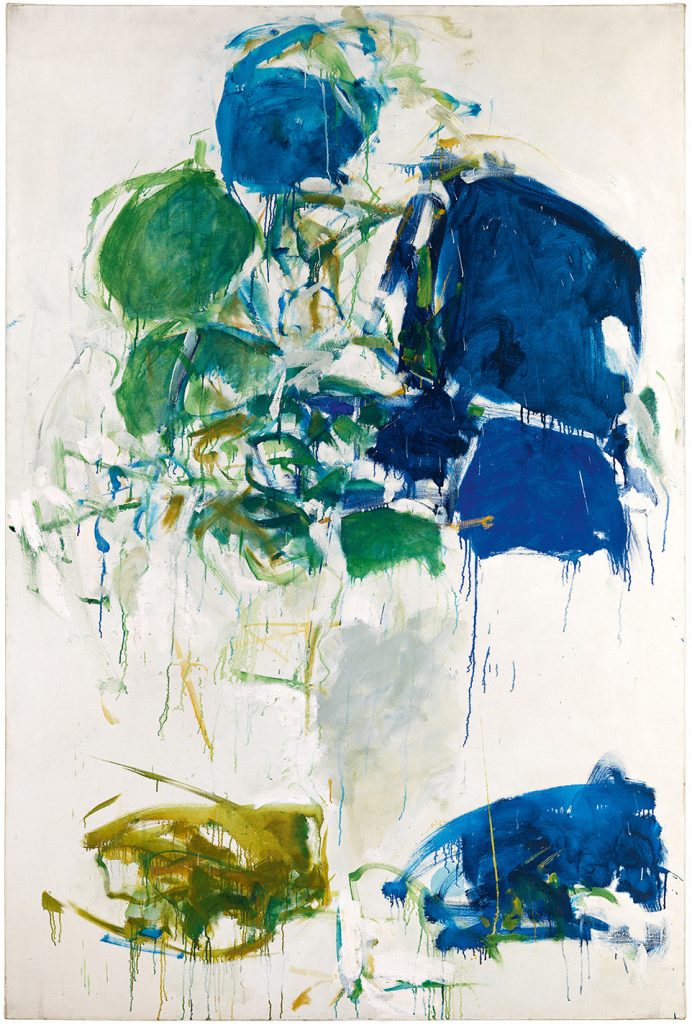
Joan Mitchell, Vétheuil (1967–68). Photo by Brian Buckley; private collection; ©estate of Joan Mitchell.
“We wanted to unmoor her from the 1950s, and put the different parts of her career together to tell a Transatlantic story,” Siegel added.
Siegel and Roberts hope that the show will underscore Mitchell’s undeniable artistic genius—but they also acknowledge her dark side.
“Mitchell was a difficult person. Anyone you talked to would will tell you stories of fights, her saying unconscionably unkind things to people. She was an alcoholic, and not a nice one, so she alienated a lot of people over the course of her life,” Roberts said. “But you will also find people, particularly younger artists, to whom she was very nurturing. She was a very complicated person.”

Joan Mitchell, Sans neige (1969). Collection of the Carnegie Museum of Art, Pittsburgh, purchased with funds provided by the Hillman Foundation; ©estate of Joan Mitchell.
To help paint a more complete picture of the artist’s career outside of that highly visible New York moment, the curators sought out rarely exhibited works by Mitchell, such as Sans neige (1969). The 16.5-foot-wide painting was her first large-scale triptych, and it hasn’t been shown since the late 1970s, when the Carnegie Museum of Art in Pittsburgh decided that the student library wasn’t the safest place to display a work of such magnitude.
“It had been in storage ever since,” Roberts said. “It needed some treatment, but the museum rallied their team and resources, and heroically got the painting ready to travel.”
The work illustrates the importance of landscape in Mitchell’s abstract visual language—a factor to which she had been attuned since her Chicago childhood, when she grew up in a tower overlooking Lake Michigan.
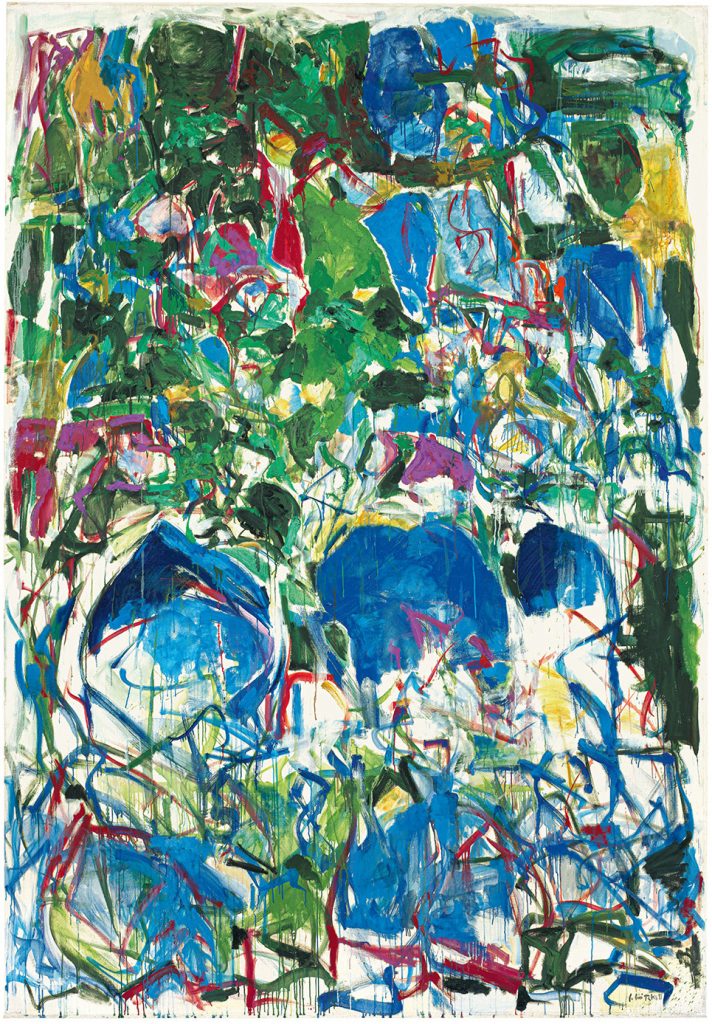
Joan Mitchell, My Landscape II (1967). Collection of the Smithsonian American Art Museum, Washington, D.C., gift of Mr. and Mrs. David K. Anderson, Martha Jackson Memorial Collection; ©estate of Joan Mitchell.
“Mitchell talked throughout her entire life about how formative the wind, the weather, the light, the color, and the constant changing of the lake was to her sense of landscape and to her visual intelligence,” Roberts said.
This influence becomes more pronounced in the second half of the show, with works made in France in the 1970s and ’80s, inspired by everything from Paris Metro stations to sailing on the Mediterranean with her long-time partner Jean-Paul Riopelle. (He documented those trips in home movies, a snippet of which plays on loop in the gallery.)
The exhibition is arranged chronologically, following Mitchell across the decades. “We wanted to tell the story of Mitchell’s art from Mitchell’s perspective, as she experienced it, in suites or cycles of work,” Siegel said.
There’s the moment when Mitchell and Riopelle put a final end to their fraught 20-year relationship, and she responds with La Vie en rose (1979), a four-panel masterpiece measuring more than 22 feet wide.
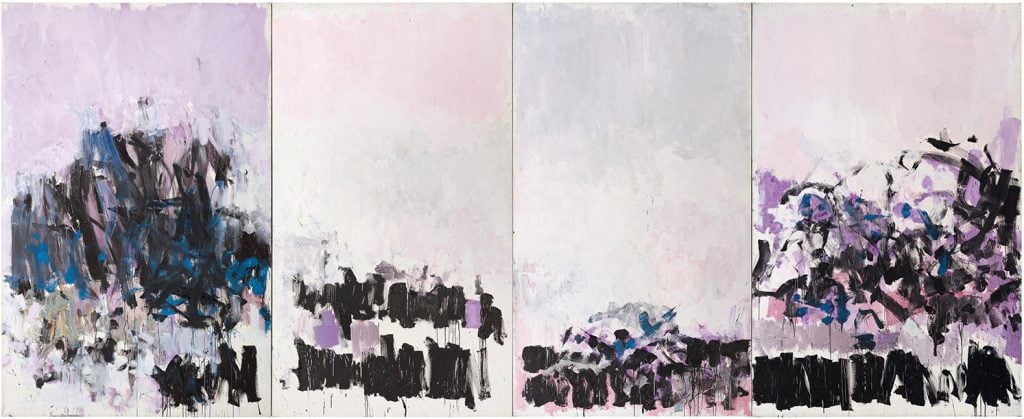
Joan Mitchell, La Vie en Rose (1979). Collection of the Metropolitan Museum of Art, New York, anonymous gift and purchase, George A. Hearn Fund, by exchange; ©estate of Joan Mitchell.
“It’s an incredibly tough, but very ambitious declaration of independence and philosophy and mourning and grief all at the same time,” Roberts said.
“As a woman alone, she’s really rising to the occasion and making paintings at a scale that she’s never made before,” Siegel agreed.
The exhibition ends with works made just months before the artist’s death, from lung cancer in 1992. The powerful paintings clearly show Mitchell still exploring new ideas on massive canvases despite her illness.
“Mitchell knowns she’s not in great health, and she knows her time is limited, and she’s really fully herself,” Siegel said.
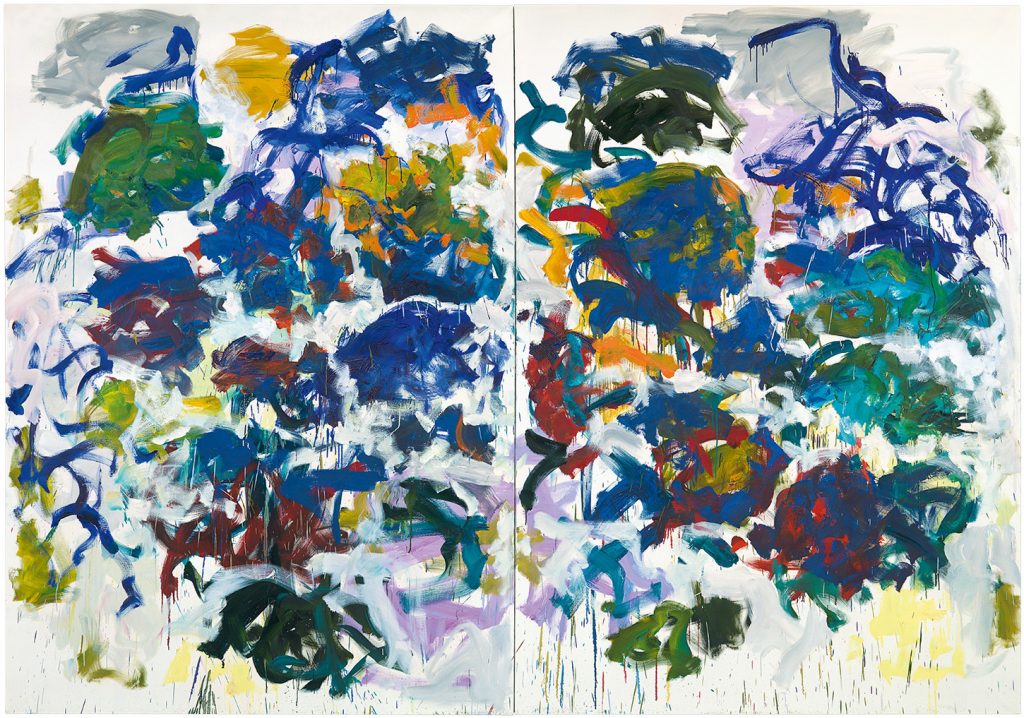
Joan Mitchell, Sunflowers (1990–91). Photo by Brian Buckley; collection of John Cheim; ©estate of Joan Mitchell.
“She keeps trying new things and pushing herself, and you see that right to the end,” Roberts added.
In the early stages of planning, the curators hoped to include as many as 125 pieces, including a large selection of Mitchell’s works on paper. In the end, the scope proved somewhat narrower.
“We couldn’t do everything,” Siegel said. “We hope that this overview is definitive when it comes to the big picture of Mitchell, but there’s so much more to do.”
“Joan Mitchell” is on view at the San Francisco Museum of Modern Art September 4, 2021–January 17, 2022. It will travel to the Baltimore Museum of Art, 10 Art Museum Drive, Baltimore, Maryland, March 6, 2022—August 14, 2022; and the Fondation Louis Vuitton, 8 Av. du Mahatma Gandhi, 75116 Paris, France, fall 2022.

Joan Mitchell, La Ligne de la rupture (1970–71). Photo by Clint Jenkins; private collection; ©estate of Joan Mitchell.
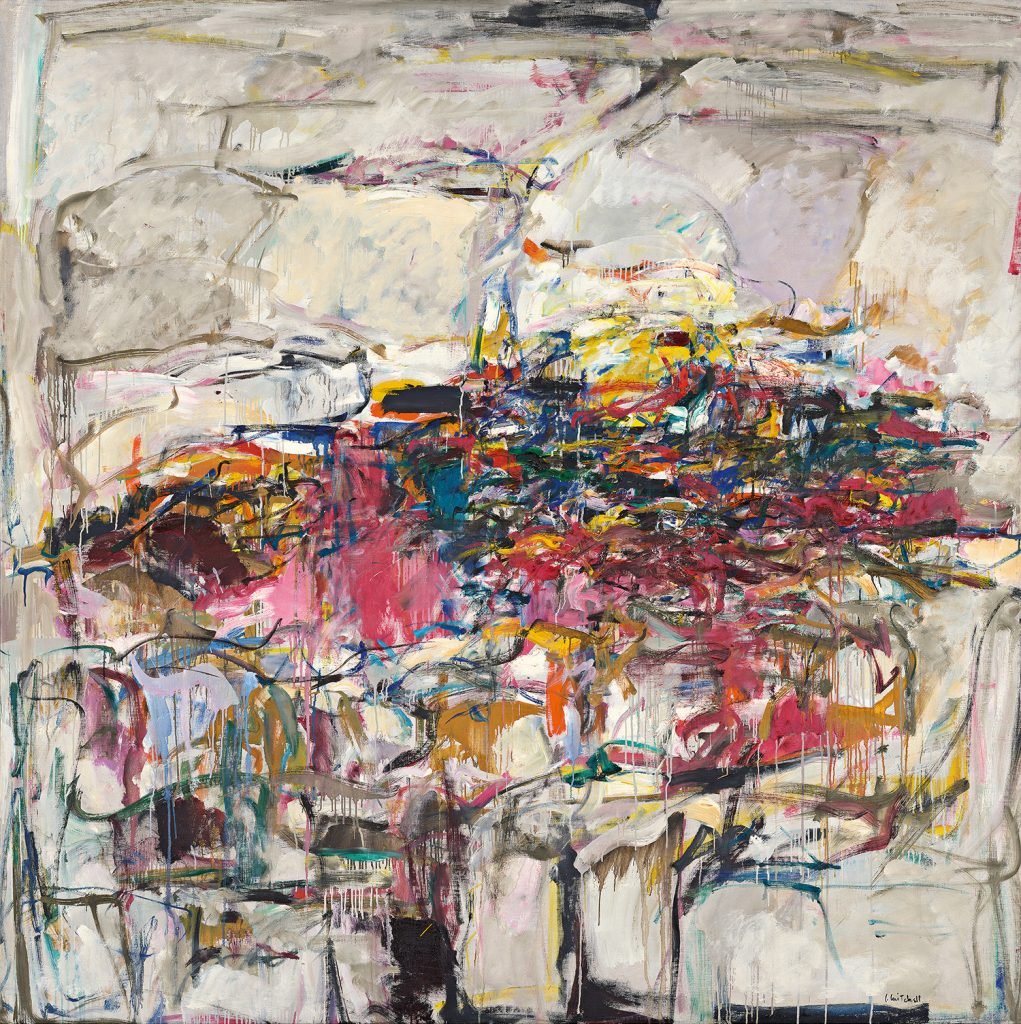
Joan Mitchell, City Landscape (1955). Photo by Aimee Marshall the Art Institute of Chicago, gift of Society for Contemporary American Art, ©estate of Joan Mitchell.
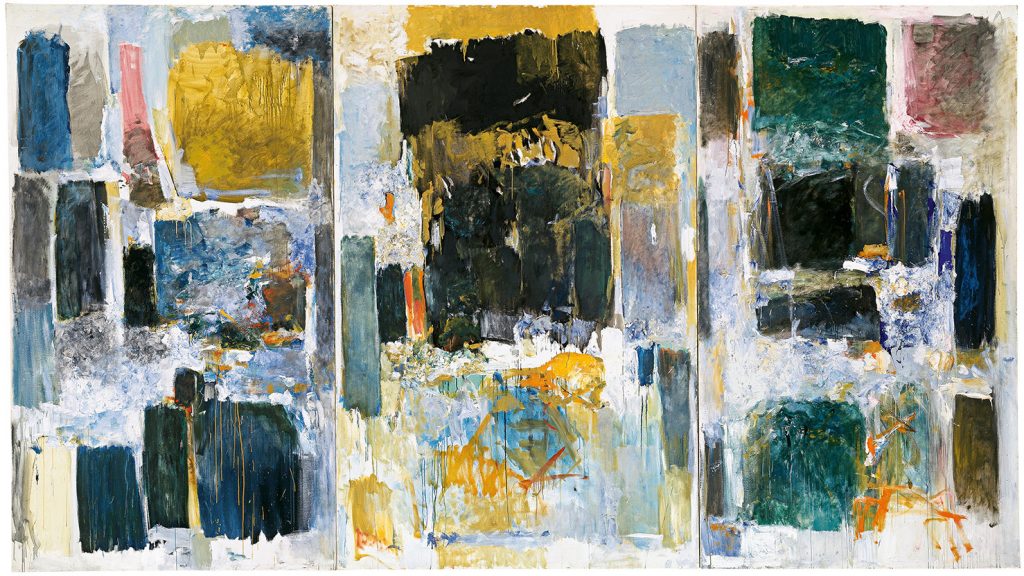
Joan Mitchell, Ode to Joy (A Poem by Frank O’Hara) 1970–71. Photo by Biff Henrich for ING_INK, Buffalo, New York; collection of University at Buffalo Art Galleries, gift of Rebecca Anderson; ©estate of Joan Mitchell.

Joan Mitchell, Rock Bottom (1960). Collection of the Blanton Museum of Art, the University of Texas at Austin, gift of Mari and James A. Michener; ©estate of Joan Mitchell.
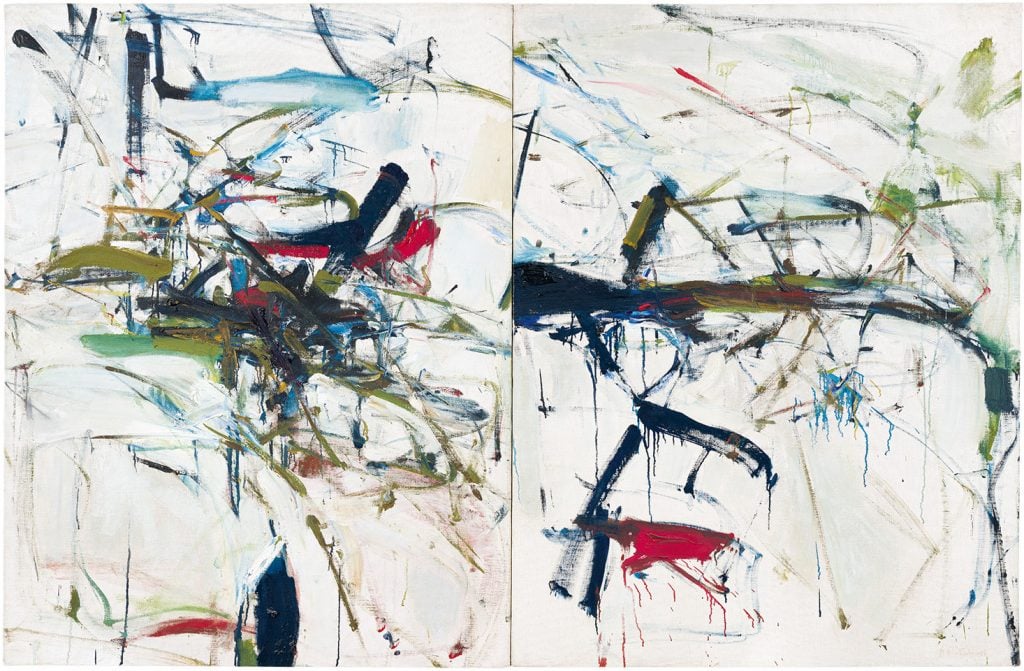
Joan Mitchell, The Bridge (1956). Photo by Kris Graves; Fredriksen Family Art Collection; ©estate of Joan Mitchell.
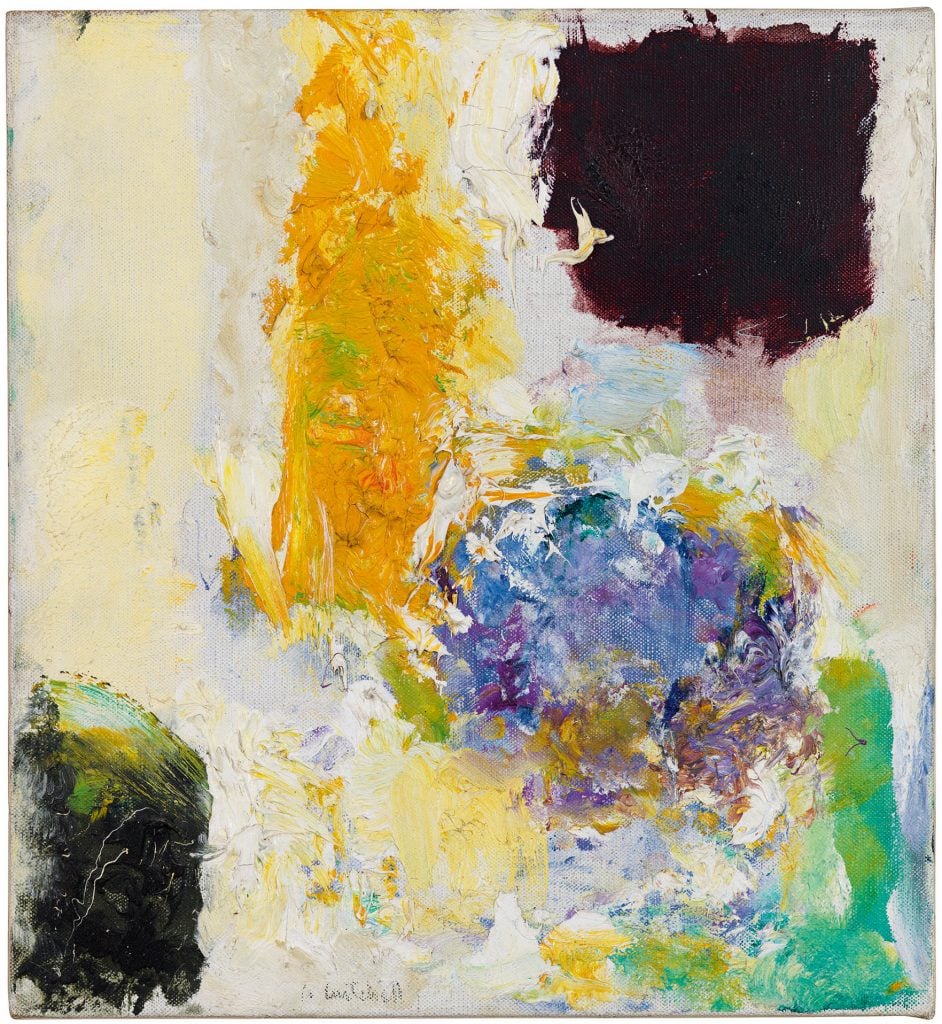
Joan Mitchell, Untitled (1973). Photo by Brian Buckle; private collection; ©estate of Joan Mitchell.

Joan Mitchell, No Birds (1987–88). Photo by Kris Graves, ©estate of Joan Mitchell.

Joan Mitchell, Untitled (1992). Photo courtesy of Cheim and Read, New York, Komal Shah and Gaurav Garg Collection, ©estate of Joan Mitchell.
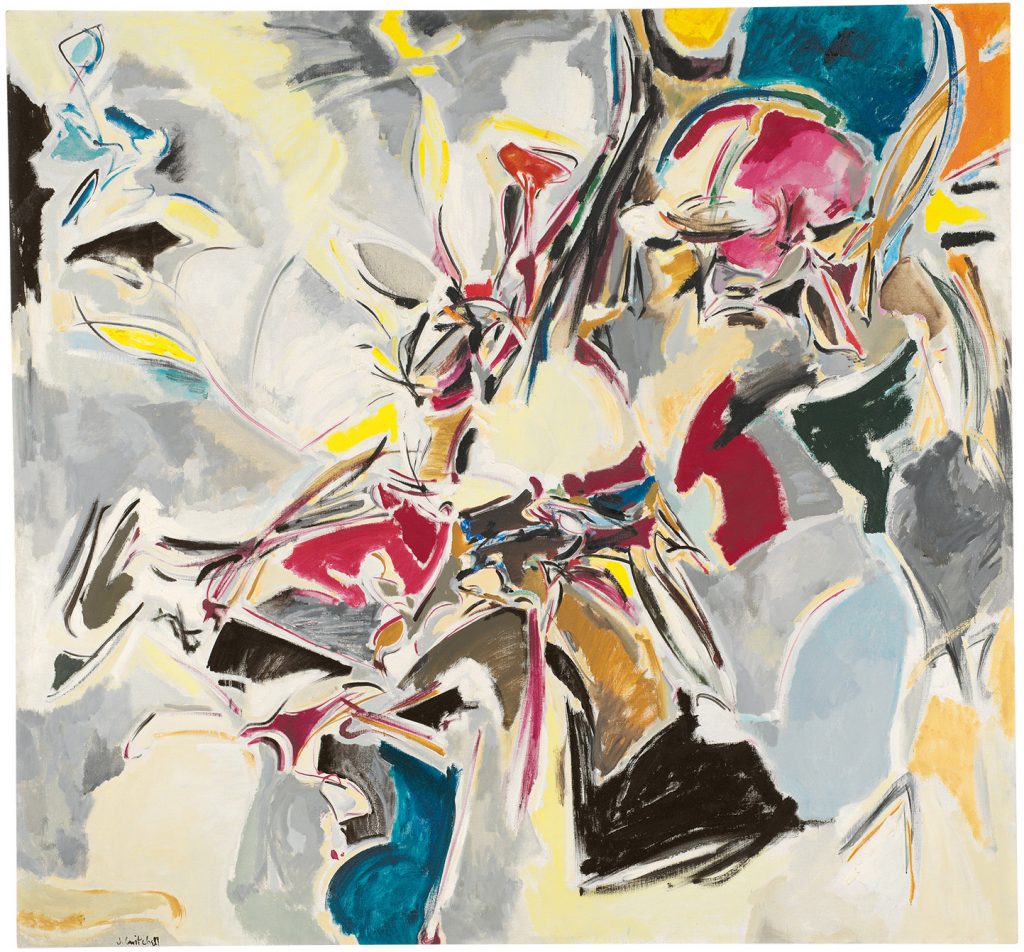
Joan Mitchell, Lyric (1951). Photo by Chip Porter; collection of the Frances Lehman Loeb Art Center, Vassar College, Poughkeepsie, New York, gift of William Rubin; ©estate of Joan Mitchell.
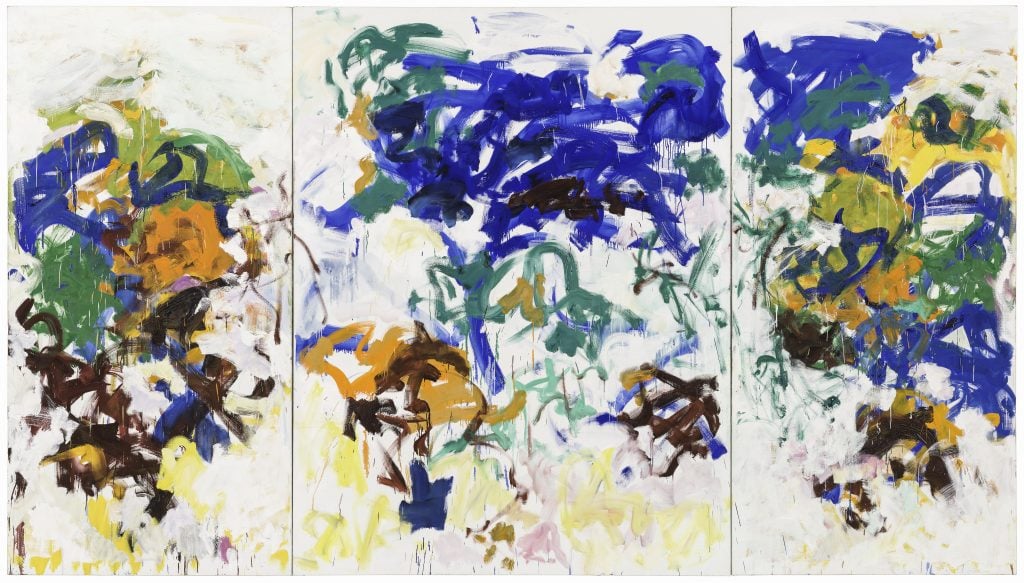
Joan Mitchell, Bracket (1989). Photo by Katherine Du Tiel; the Doris and Donald Fisher Collection at the San Francisco Museum of Modern Art; ©estate of Joan Mitchell.
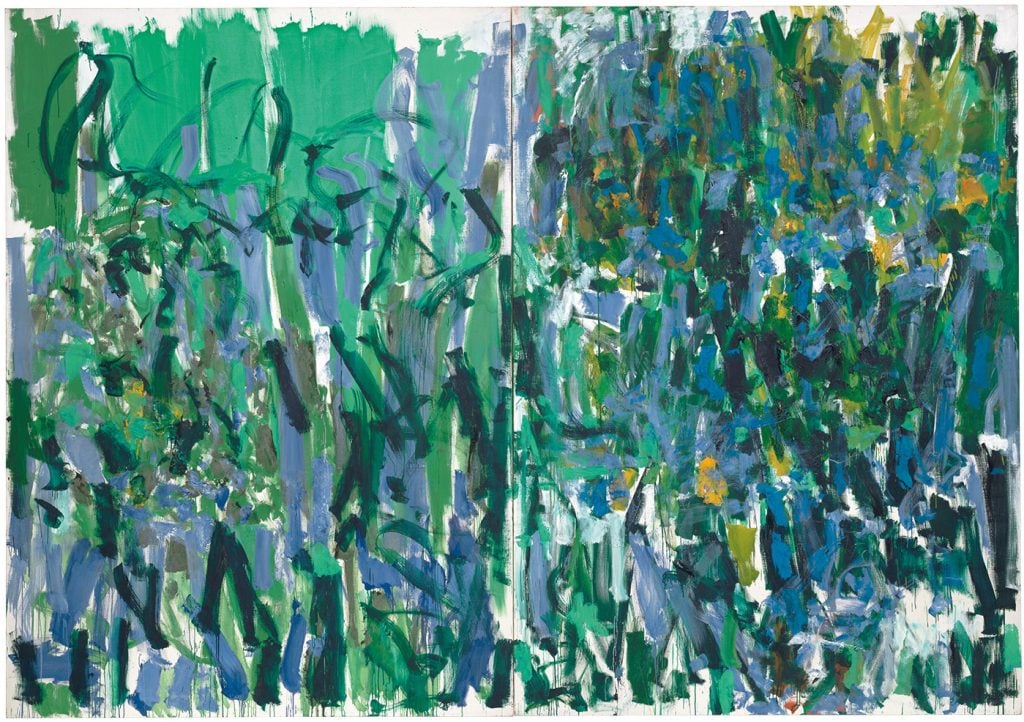
Joan Mitchell, No Rain (1976). Collection the Museum of Modern Art, New York, gift of the estate of Joan Mitchell; ©estate of Joan Mitchell.

Joan Mitchell, Weeds (1976). Photo by Ian Lefebvre for the Art Gallery of Ontario; collection of irshhorn Museum and Sculpture Garden, Smithsonian Institution, Washington, D.C., gift of Joseph H. Hirshhorn; ©estate of Joan Mitchell.